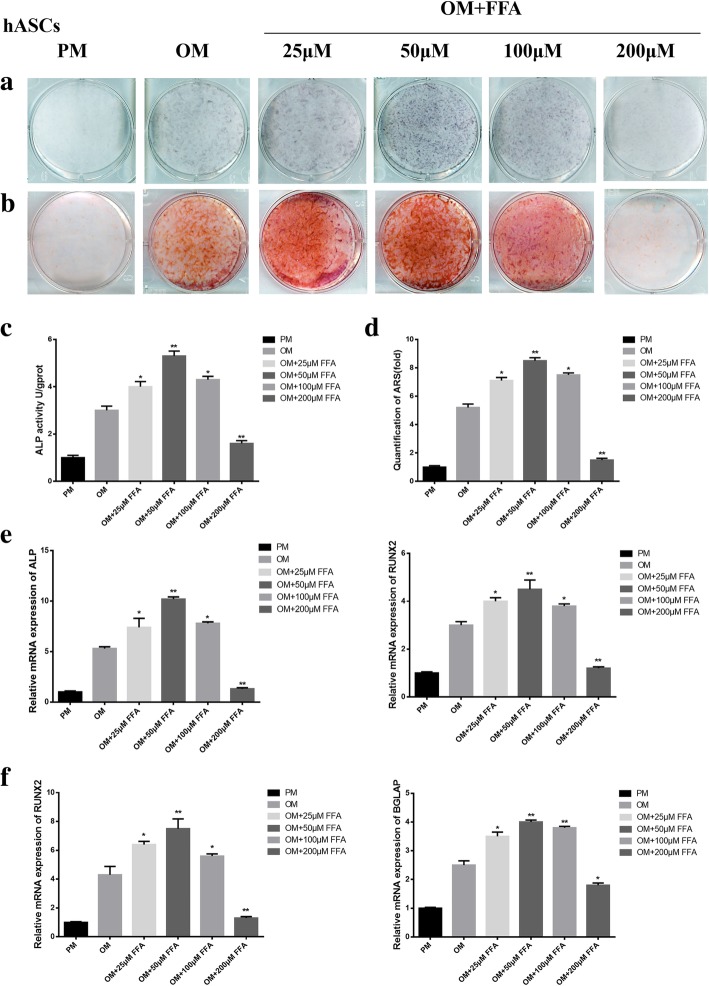Fig. 2.
FFA at different concentrations affected osteogenic differentiation of hASCs in vitro. a 25, 50, and 100 μM FFA increased ALP activity in hASCs, whereas 200 μM FFA decreased ALP activity as shown by ALP staining. Human ASCs were cultured in PM, OM, or OM with FFA at 25, 50,100, or 200 μM for 7 days. b FFA at 25, 50, and 100 μM accelerated mineralization in hASCs, whereas 200 μM FFA reduced mineralization as shown by ARS staining. Human ASCs were cultured in PM, OM, or OM with FFA at 25, 50,100, or 200 μM for 14 days. c The result of quantification of ALP activity was consistent with the result of ALP staining. d The result of quantification of ARS was consistent with the result of ARS staining. e FFA at 25, 50, and 100 μM promoted the expression of ALP and RUNX2 on day 7, whereas 200 μM FFA inhibited the expression of the genes mentioned above, as determined by qRT-PCR. f FFA at 25, 50, and 100 μM promoted the expression of RUNX2 and BGLAP on day 14, whereas 200 μM FFA inhibited the expression of the genes mentioned above, as determined by qRT-PCR in hASCs. All data are shown as the mean ± SD, n = 3. *p < 0.05 and **p < 0.01 compared with OM. FFA, flufenamic acid; hASCs, human adipose-derived stem cell; PM, proliferation media; OM, osteogenic media; ALP, alkaline phosphatase; ARS, alizarin red S; RUNX2, runt-related transcription factor 2; BGLAP, bone gamma-carboxyglutamate protein; qRT-PCR, quantitative real-time reverse transcription PCR

